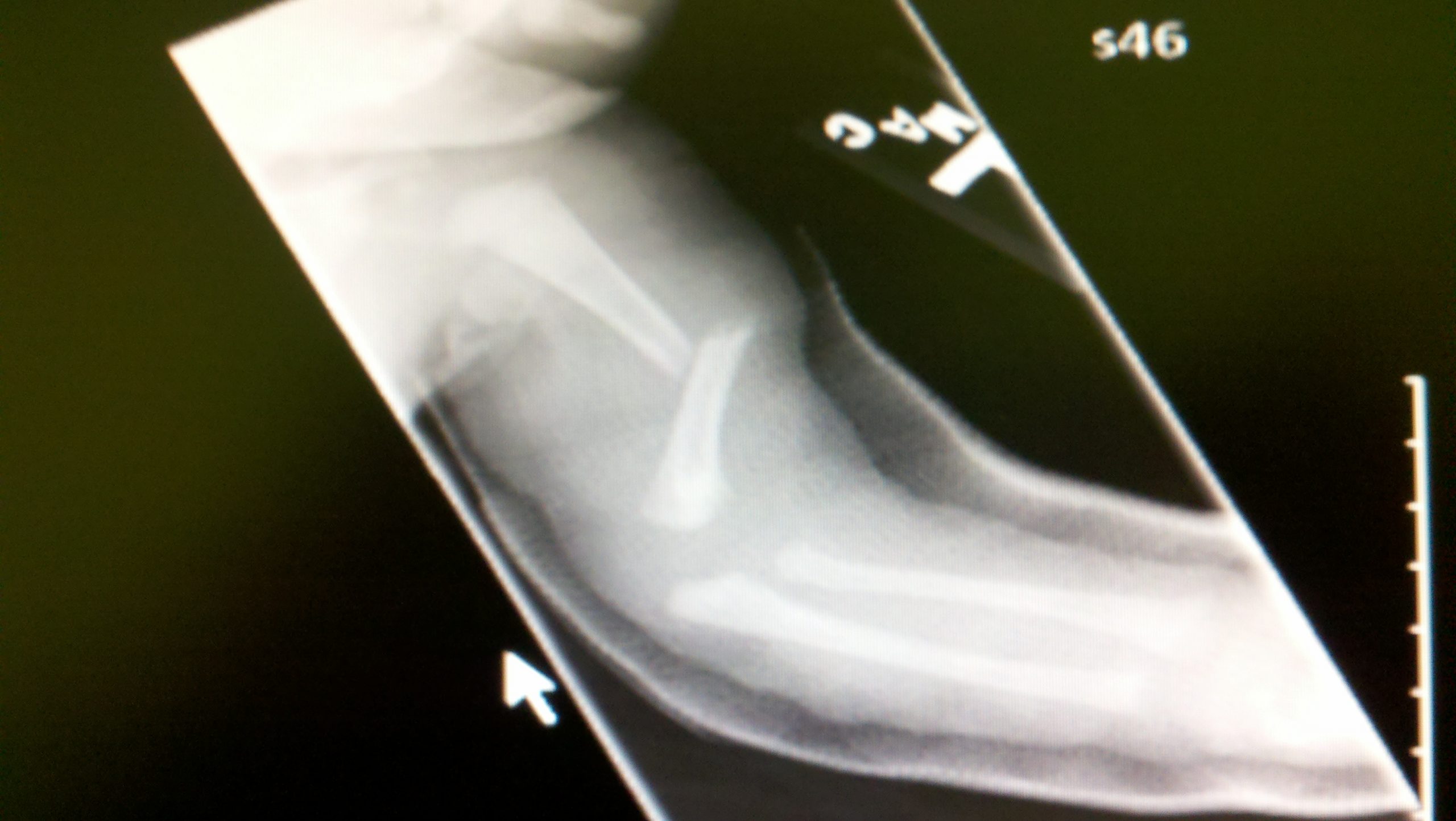- See:
- Erb's Palsy
- Lower Root Injury: (Klumpke)
- Shoulder in brachial plexus injuries:
- Traumatic Brachial Plexus Palsy in Children
- Discussion:
- incidence of brachial plexus birth palsy is approx two / 1,000 births;
- most often arises from neonates large for gestational age, dystocia, twin pregnancy;
- most common palsy involves C-5 & C-6 roots (Erb's palsy );
- total brachial plexus involvement & lower root (C-7 & C-8) palsies are less common and affect hand function;
- brachial plexus injuries can range from mild neuropraxia with early recovery to complete disruption with no potential for recovery;
- greater than 80% of affected children will attain near-normal function;
- natural history of obstetric brachial plexus injuries indicates that patients who show evidence of biceps function before 6 months of age have near
-normal to excellent function;
- diff dx:
- pseudoparalysis resulting from clavicle and humerus fractures or osteomyelitis must be excluded when considering the diff dx;
- clavical frx;
- SH I or II frx of unossified proximal humeral epiphysis;
- best diagnosed by ultrasound in the infant;
- Clinical Presentation:

- shoulder becomes flexed, internally rotated, and slightly abducted;
- active abduction of joint decreases and external rotation ceases;
- shoulder is posteriorly subluxated and may dislocate;
- in about half of the patients the elbow will be affected;
- look for flexion contracture of elbow
- radial head may be dislocated posteriorly and in these the ulna may be posteriorly bowed;
- in most severe deformities elbow progressively dislocated posteriorly and medially;
- Indicators of Severe Involvment and Poor Prognosis;
- erb duchenne: best prognosis;
- klumpke: poor prognosis;
- total plexus: worst prognosis;
- horner's syndrome
- dorsal scapular nerve or anterior thoracic nerve
- sensory deficit
- whole plexus or arm type;
- there is complete sensory and motor injury of the entire extremity because of severe injury to all the roots of brachial plexus;
- Non Operative Treatment and Prognosis:
- there is good prognosis for recovery of most obstetrical brachial plexus palsies;
- minimal injury responds well to conservive treatment although recovery may take upto 1 1/2 years;
- expect spontaneous return of function until about 18 mo of age;
- upto 90% of injuries will spontaneously resolve w/o intervention;
- in the study by Bennet and Harrold 1976, 18/20 patients had complete recovery by one year;
- in the study by Gordon et al 1973, 56 of 59 patients showed complete recovery;
- Treatment during first 6 months
- is directed specifically at prevention of fixed deformities;
- gentle range of motion exercise will prevent shoulder contractures;
- continuous splinting is contraindicated;
- however, positional splinting between exercises may be helpful;
- it is important to maintain full extension of fingers, hand, wrist, full pronation and supination of forearm, full extension of elbow, and full extension of
elbow, and full abduction, extension, and external rotation of the shoulder;
- with paralysis of the supraspinatus and infraspinatus muscles will produce an adduction and internal rotation contraction along w/ posterior
subluxation of the shoulder;
- Surgical Options:
- indications for surgery:
- no clinical or EMG evidence of biceps function by 6 months;
- this represents 10% to 20% of children with obstetric palsies;
- brachial plexus exploration
- neurolysis
- end-to-end repair
- nerve grafting;
- muscle transfers are reserved for late unresolved deformities;
- early microsurgical repair:
- continues to gain acceptance for children having obstetric palsies;
- concern is no longer whether early surgery is indicated, but rather how early those pts requiring surgery are identified;
- Late Deformities:
- modified L'Episcopo procedure:
- assoc w/ internal rotation & adduction contraction of the shoulder;
- involves lengthening of pectoralis major & subscapularis tendons w/ transfer of teres major & insertions into posterior surface of the humerus
to act as external rotators;
- osteotomy:
- for older children with fixed bony adaptive changes, proximal humeral external rotation osteotomy can be considered;
- these patients will most often complain of internal rotation contracture;
- in the report by JM Kirkos, et al., the average increase in abduction was 27 deg, and avg increase in rotational arc was 25 deg;
- references:
- Late treatment of brachial plexus palsy secondary to birth injuries: rotational osteotomy of the proximal part of the humerus.
JM Kirkos.
- posterior glenohumeral subluxation:
- limitation of external rotation;
- in late cases, w/ a deficient posterior glenoid consider humeral derotational osteotomy;
- ref: Posterior Shoulder Dislocation in Infants with Neonatal Brachial Plexus Palsy.
Brachial plexus birth palsy: A 10-year report on the incidence and prognosis.
The immediate and long term outcome of obstetric birth trauma.
Brachial-plexus palsy in the newborn.
Prognosis and early management of birth injuries to the brachial plexus.
Reliability of Three Classification Systems Measuring Active Motion in Brachial Plexus Birth Palsy.
Neonatal Brachial Plexus Palsy. Outcome of Absent Biceps Function at Three Months of Age.
Repair of obstetric brachial plexus palsy: results in 100 children.
Impaired Growth of Denervated Muscle Contributes to Contracture Formation Following Neonatal Brachial Plexus Injury

